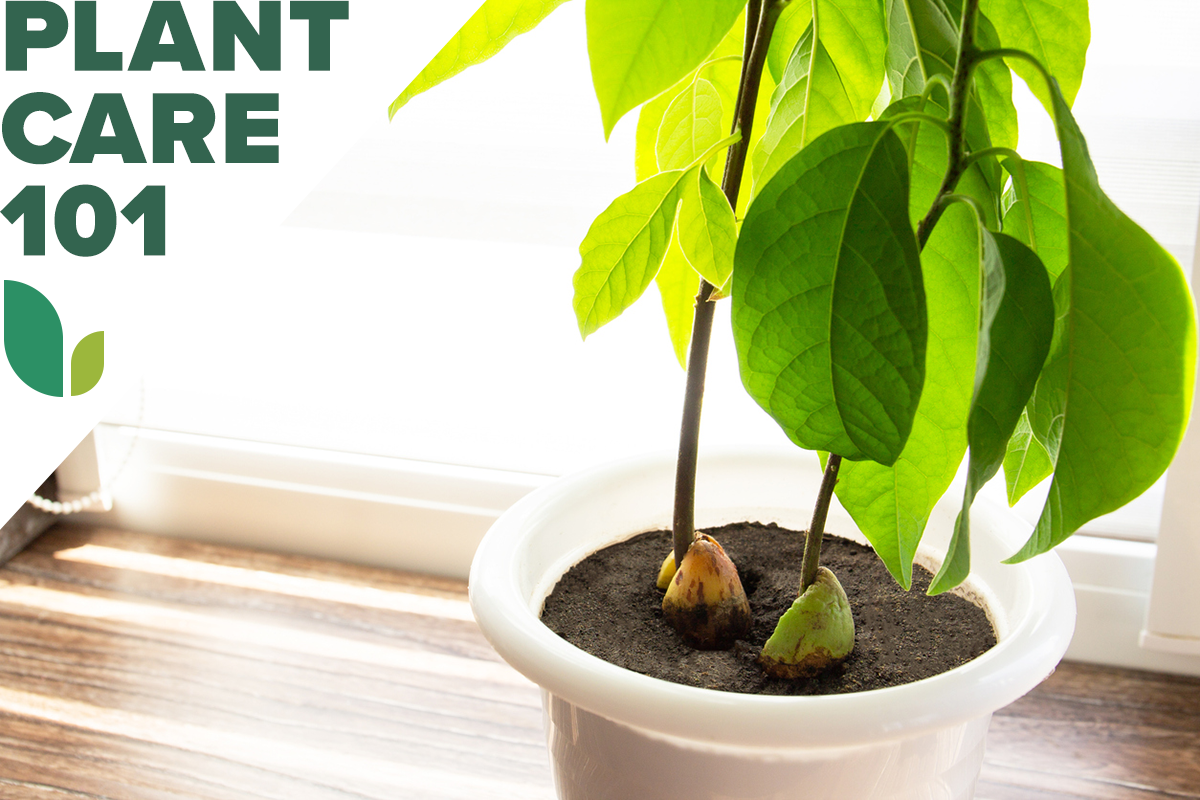

We may earn revenue from the products available on this page and participate in affiliate programs. Learn More ›
Avocado plant care can be tricky since the “alligator pear” grows leggy fast without bright light, but it also can burn in full sun when not fully foliated. Still, it makes an attractive, glossy-leaved houseplant when its needs are met.
When contemplating how to grow an avocado from a pit, keep in mind that plants started that way don’t “come true from seed.” In other words, they don’t grow into the same cultivar from which they were derived. They also seldom produce fruit indoors. If you think you have bright enough conditions for that, you’ll want to purchase a grafted clonal variety instead.
Avocado Plant Care at a Glance
Common Name: Avocado
Scientific Name: Persea americana
Soil: Cactus and citrus potting soil
Light: Full sun
Water: Medium
Food: Citrus and avocado plant food
Temperature and Humidity: Warm days, cool nights
Propagation: Seed
Safety: Toxic to some animals
Avocado Plant Characteristics
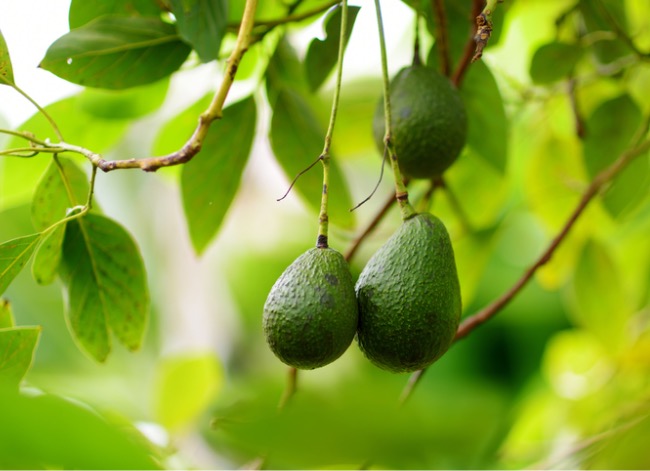
A full-grown avocado tree may reach a height of 60 feet outdoors, but probably won’t surpass 10 feet or so if kept properly pruned indoors. Its outdoor hardiness varies, according to cultivar, from USDA hardiness zones 8b through 12.
The tree makes leathery, pointed 4- to 12-inch leaves and panicles of small greenish-yellow blossoms in winter to spring. Those will be followed by lime-green, pear-shaped, or round fruits in summer, which vary from 6 ounces to 4 pounds, and each contains one large seed. Avocado skins eventually ripen to dark green or black, and the flesh to yellow.
Is avocado a stone fruit? No. Due to the fleshiness of its endocarp (seed covering), it is considered a single-seeded berry. Although avocado seeds often are called avocado pits, as those of stone fruits are, they lack the hard shell that pits usually have.
Selecting Soil for Avocado Plants
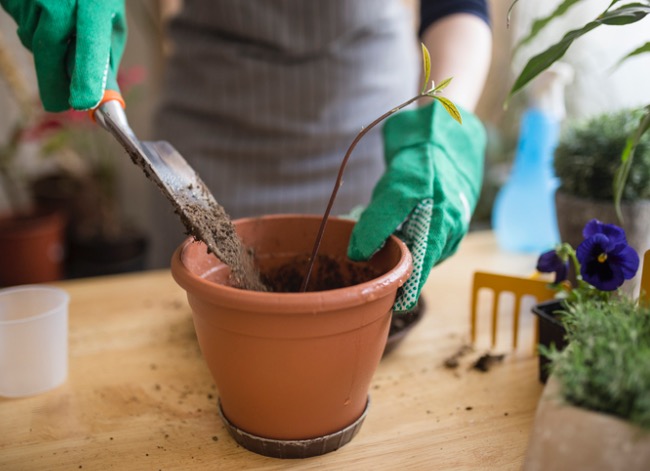
Since avocado is highly susceptible to root rot, keep it in soil that drains very well and that has a pH between 6 and 6.5 (use a pH meter to test the soil). A cactus and citrus potting mix that contains sand is one possibility. Another suggested formula includes one part peat moss, one part perlite, and one part standard potting mix.
You’ll also want to place the plant in a container that “breathes,” such as a terra-cotta pot or, if it grows quite large, a wooden half barrel. Whatever container you use, make sure that it has drainage holes on the bottom to prevent sogginess in the soil and that it won’t be too heavy to move indoors during winter.
Choosing the Right Light
Mature avocado trees need full sun, so they should be placed near a large south-facing window or in a greenhouse or sunroom. However, the trunk and branches of young trees not yet fully leafed out can suffer sunburn when those plant parts aren’t shaded by foliage.
Therefore, it’s a good idea to keep trees under one year old in bright, indirect light until they have a full “head of leaves” before gradually exposing them to full sun.
If you need to prune an older tree, do what avocado growers do under those circumstances and whitewash the trunk and branches to protect them from the sun. For whitewash, you can use one part white latex interior paint diluted with one to three parts of water or an organic white kaolin clay crop protectant.
Watering Avocado Plants
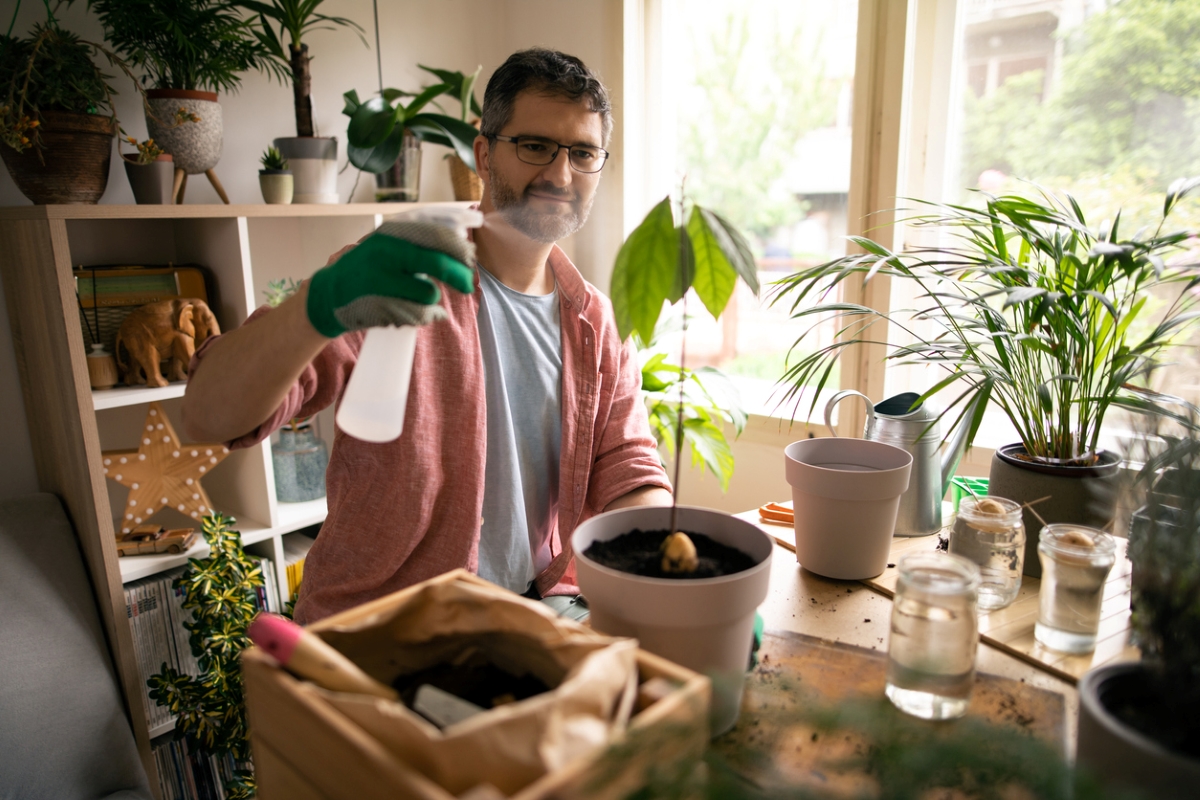
Keep your avocado’s soil lightly but evenly moist during the spring and summer months. During autumn and winter, when root rot is more common, don’t water the plant again until its potting mix has dried out an inch beneath the surface.
Hard water can increase the alkalinity of the soil, sometimes causing zinc and iron deficiency chlorosis in avocado, indicated by green-veined yellowing leaves. You should water with rainwater or spring water if your tap water is hard.
To leach out calcium and fertilizer salts already present:
- Water the pot heavily enough that the excess runs out into the saucer.
- Throw out that excess.
- You also may want to apply chelated iron and zinc to your plant once a month until its foliage greens up again.
Fertilizing Avocado Plants
Feed your avocado plant during spring and summer with an avocado and citrus fertilizer at the rate the directions recommend for potted plants.
Refrain from fertilizing it during winter, since overfeeding then tends to reduce the number of buds that form.
Also, avocados shoot up rapidly, so too much feeding can cause them to quickly outgrow the space allotted to them.
To encourage your plant to branch out rather than aim for the ceiling, snip 2 inches off the tip of your young tree after it reaches 1 foot high. Pinch it back again after it reaches 2 feet in height, etc.
Setting the Temperature and Humidity
The avocado prefers temperatures between 60 and 80 degrees Fahrenheit, accompanied by humid conditions, and might drop its leaves when exposed to sudden shifts in the numbers which can “do a number” on it.
So, if you move your tree outdoors for the summer, you should bring it back in before temperatures fall below 50 degrees outdoors and before the indoor air becomes dry due to central heating.
The tree also appreciates slightly cooler “sleeping weather.” It flowers best if given 68-degree nights with an almost 10-degree rise to 77 during the daytime.
Use a plant mister on avocado plant regularly, and keep it near other plants to help raise the humidity levels around all of them.
Pruning Your Avocado Plant
To prune an avocado plant, identify any dead or damaged branches first, and then trim them off with clean, sharp pruning shears.
Then, find a part of the plant where the leaves first start to grow, also known as a node, and cut just above it.
Propagating Avocado Plants
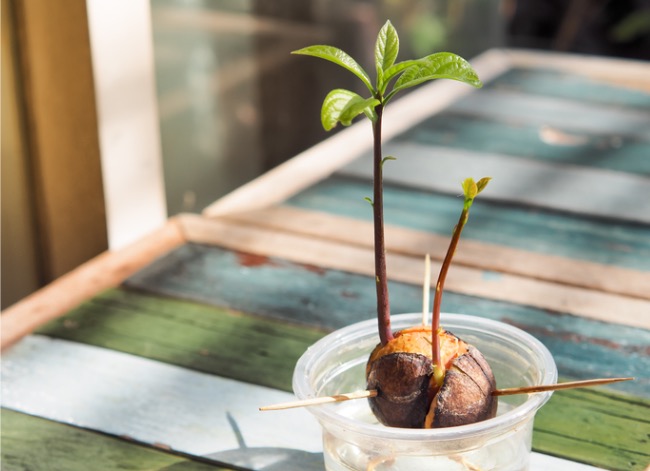
The avocado seed-in-water experiment for growing avocado from seed uses a glass of water and toothpicks to hold the seed on the glass; this is popular with kids.
However, when considering how to plant an avocado seed, keep in mind that it is actually easier to start with soil, so you don’t have to transfer the “little sprout” to a pot later.
- Soak the seed in lukewarm water overnight and remove its parchment-like “skin.”
- After filling a 6-inch pot with damp potting mix, insert the seed into that soil, allowing the top third to protrude above the surface. (The pointy end should be up, the one marked with a lighter circle down.)
- Cover the exposed tip of the seed with an upended transparent plastic cup and place the pot in a warm area that receives bright, indirect light. Although the roots can begin developing after 2 or 3 weeks, you might not see a sprout until after a month or more.
Types of Avocado Plants
There is plenty of selection among avocado varieties, often important for those who grow the tasty fruit that ends up in our stores’ produce sections. Here are a few types you might enjoy growing indoors:
- Day: Called by Byron and Laurelynn Martin of Logee’s Plants, “by far the easiest avocado variety to fruit in a pot as a small plant,” this cultivar reportedly can begin producing when 3 feet tall.

- Mexicola: Also recommended by the Martins, this black type bears smaller leaves and fruits than most avocados, making it an easier “fit” for the indoor garden.
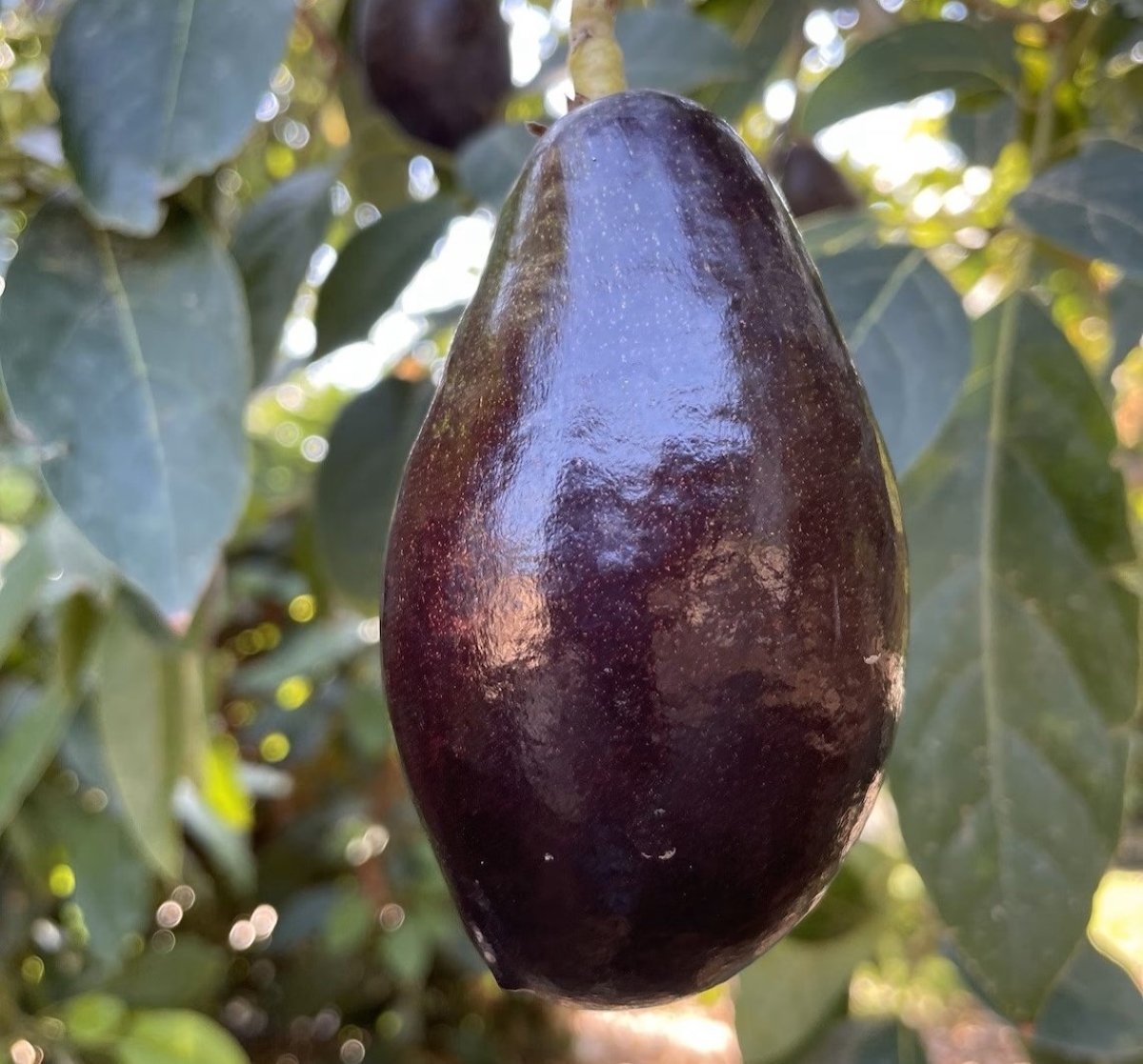
- Wurtz: Sometimes called Little Cado, this dwarf self-pollinating variety usually doesn’t surpass 10 feet indoors and also is touted for container growing.

- Catalina: Cold-hardy and can be grown in containers or planted on your property. The Catalina avocado fruits within the first two years if it’s grown in a warm region.
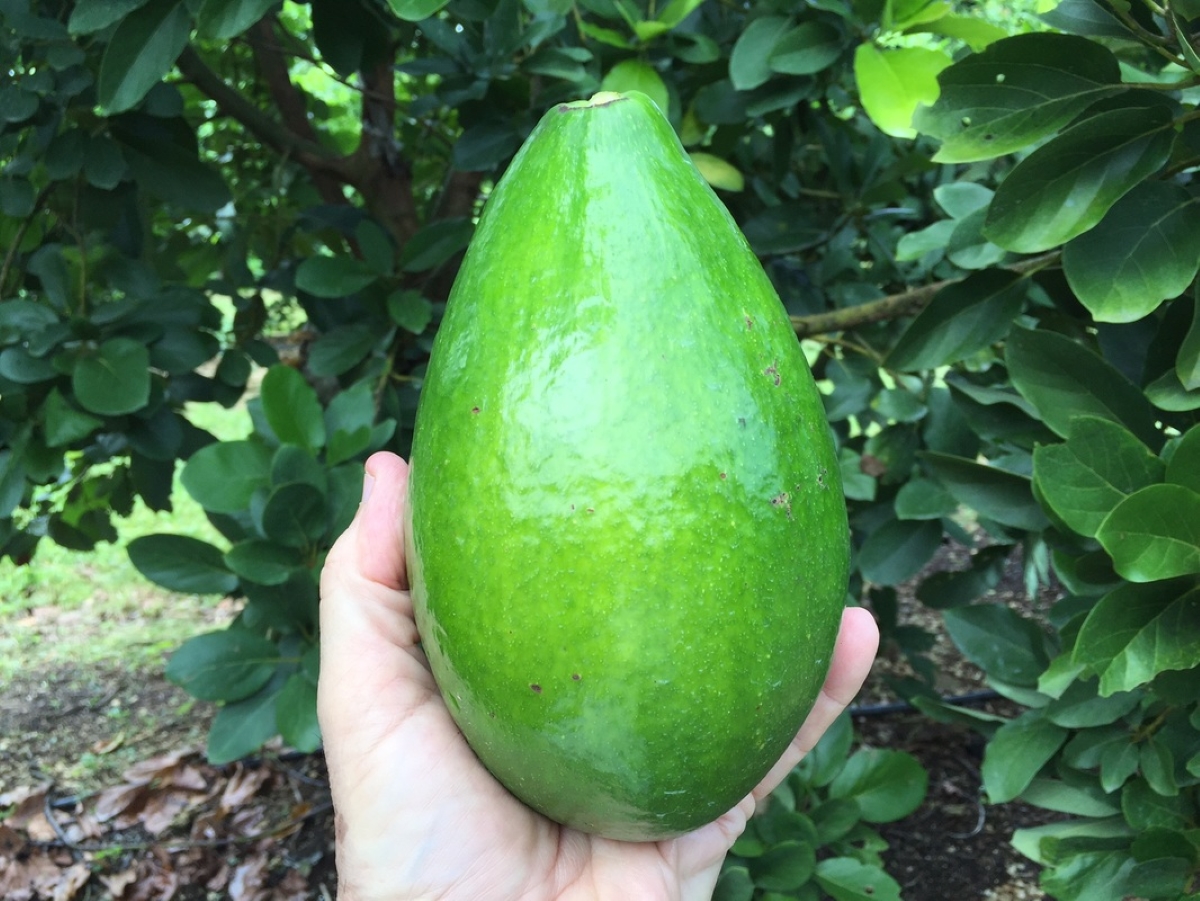
Potential Pests and Diseases
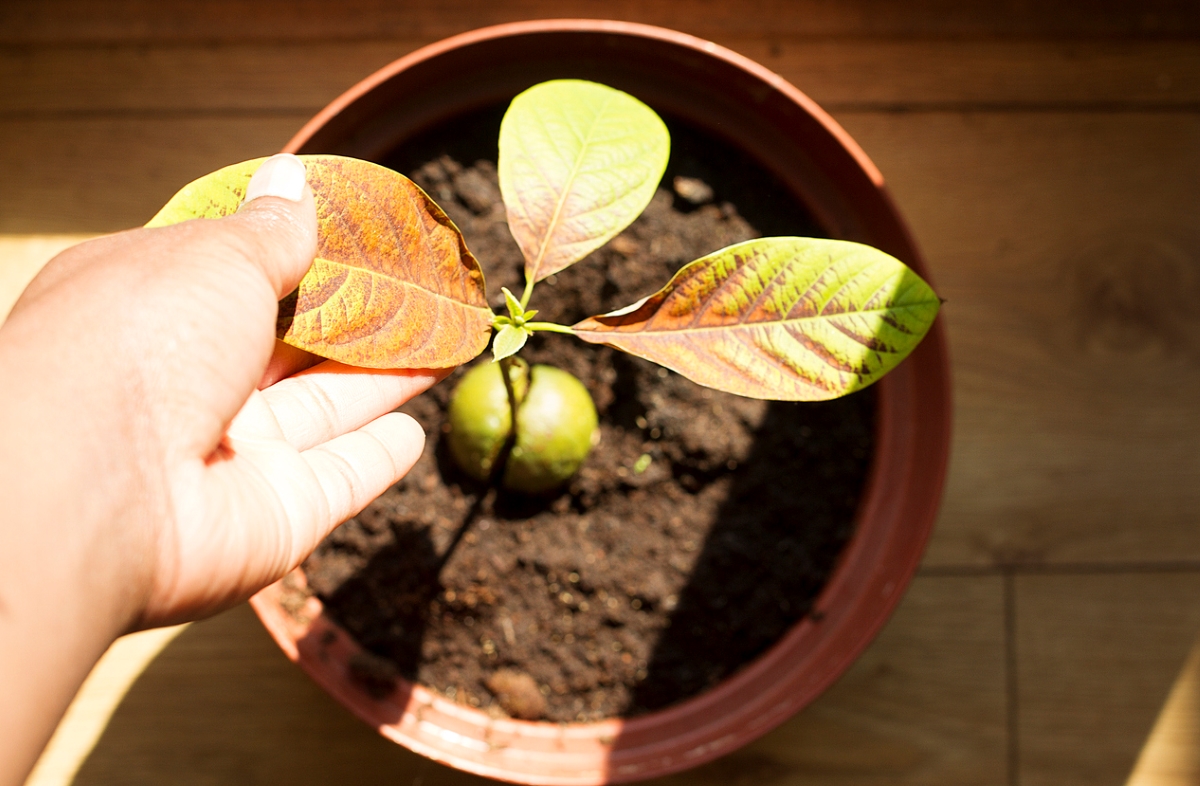
Although seldom bothered by pests, avocado is vulnerable to both root rot and sunburn. Initial signs of root rot include undersized, pale leaves and the death of the smallest topmost branches, perhaps accompanied by brown leaf tips.
Eventually, all the foliage will wilt. You sometimes can save a plant by removing it from its pot, trimming off the parts of the roots that are already mushy with rot, repotting it in a fresh and more fast-draining potting mix, and watering it less often.
Sunburn causes yellow leaves, frequently with the veins remaining green. Those yellow areas eventually turn brown and dry. Sunburn often is accompanied by cracked and purplish branches.
Such burning frequently will accompany root rot, due to many of the leaves falling off and leaving the bark exposed. Move the plant to an area out of direct sunlight until it recovers enough foliage to shade itself.
Safety Considerations
Even though people can eat ripe avocado fruits, all parts of the tree and its green fruits can be poisonous to livestock and poultry, as well as to pet rodents, birds, and fish. A fungicidal toxin in the plant called persin reportedly sometimes causes respiratory or cardiac problems, as well as mastitis, swelling, colic, or diarrhea in animals.
According to Colorado State University, caged birds are especially vulnerable. You’ll want to keep your plant far from them and from your aquarium, as well as from other penned pets such as rabbits, guinea pigs, and pet rats. Although dogs aren’t as often affected by persin, it reportedly can cause vomiting and diarrhea in them too.
FAQs
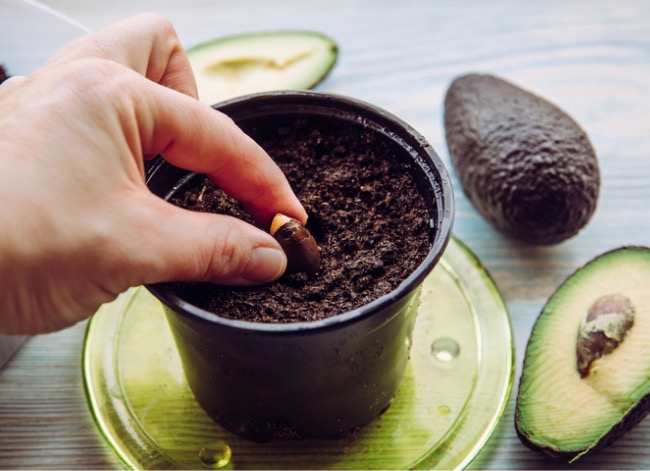
Give a mature, well-foliated avocado full sun. Place a young plant or one with a few leaves in bright, indirect light.
Water avocado plants enough to keep its soil lightly moist during spring and summer. Allow that soil to dry out about one inch down during winter before watering the plant again.
A variety of problems can cause avocado leaves to turn brown, including underwatering or overwatering the plant, sunburn, and a build-up of fertilizer salts in the soil.
Yes, avocado trees can grow in pots indoors, though they are less likely to flower and fruit there than if planted in the ground outdoors (only in hotter regions).
Keep an avocado plant indoors near a bright, sunny window where it can receive ample sunlight. Avocado plants thrive in warm, sunny environments, so a location with consistent temperatures is ideal.
Looking for more full-sun plants? Check out our guides on caring for bird of paradise, croton, and jade plant.
About the Author
Audrey Stallsmith is the author of the Thyme Will Tell gardening-related mystery series from WaterBrook Press, an imprint of Penguin Random House. A former master gardener with over 30 years of horticultural experience, she has been published in Woman’s World, Birds & Blooms, Writer’s Digest, and more. Stallsmith has also written hundreds of gardening articles for such sites as eHow, SFGATE, and Dave’s Garden, as well as her own Thyme Will Tell site.
